Wise Forgeries
Thomas James Wise (1859-1937) was a renowned English book collector, bibliographer, editor, and, as it turned out, forger. Wise wrote many authoritative bibliographies of nineteenth century poets, including Browning, Tennyson, and Swinburne. Wise also worked as an agent to other book collectors helping to find works, especially noted first editions, to purchase for their collections. During the course of constructing his bibliographies, Wise would discover a previously unknown first edition of a popular poem or work. The poem would most often be in pamphlet form, published for private distribution by the author prior to the formal publication of the known first edition. While this private pre-publication was not an unheard-of practice for authors in the nineteenth century, especially for distribution to friends and family, it was suspicious that Wise discovered so many of them in such a short period of time.
In 1934, after an extensive investigation, John W. Carter and Henry Graham Pollard published their book, An Enquiry into the Nature of Certain Nineteenth Century Pamphlets, claiming that dozens of these "discoveries" of Wise were in fact counterfeits. While the Enquiry did not accuse Wise of creating these forgeries, it did imply that he was ignorant of their origins and passed them off as originals. Wise died three years later, still denying that he was responsible. Further examination and tests support the theory that Wise created at least 100 forgeries of works by famous nineteenth century poets along with his partner, Harry Buxton Forman, and sold them for great sums of money.
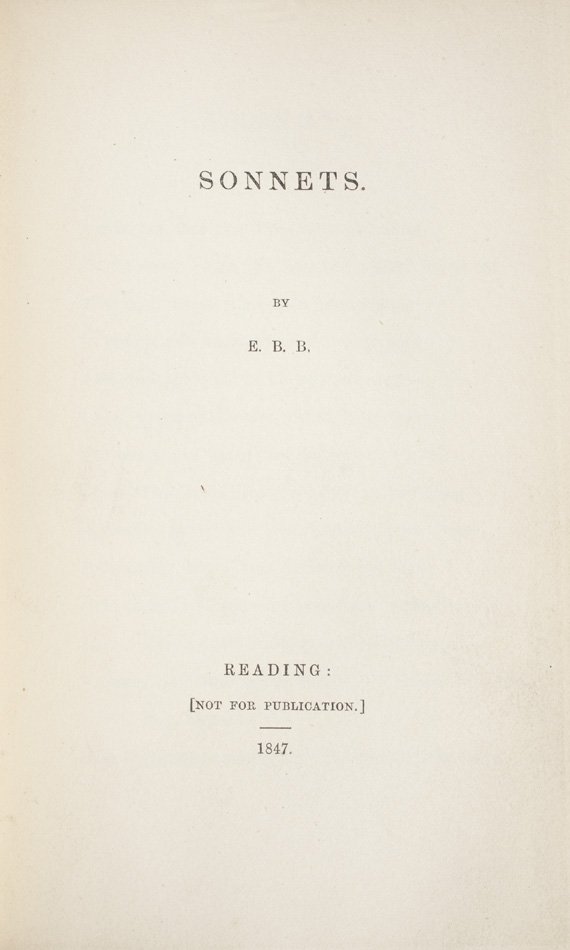
[Elizabeth Barrett Browning (1806-1861)]
Reading: [Not for publication.], 1847
On Loan from Deborah Wachs Barnes, Sharon Wachs Hirsch, Judith Pieprz, and Joel Wachs, AB’92
A fabricated first edition and the most famous of Thomas J. Wise's forgeries. His method was to take a well-known literary text, in this case "Sonnets from the Portuguese," and concoct a private and necessarily rare printing purporting to precede the regularly published first edition. The sonnets in question had originally appeared in the author's two volume set Poems of 1850. This pamphlet was first revealed as a forgery and attributed to Wise in 1934, by John Carter and Graham Pollard. Their research indicated that the paper was composed of chemical wood with a trace of rag, which could not have been manufactured before 1874, and was unlikely before 1883. In addition, the text is printed in a type face called Clay's Long Primer No. 3, of which certain letters were not cut until 1880. The true date of printing was probably about June 21, 1893, on the basis of a letter to Wise from Edmund Gosse.
According to Wise, this pamphlet was issued stitched without wrappers, but almost all known copies have been rebound, probably after Wise's own instructions. For his own copy he invented a plausible provenance: "This copy of Mrs. Browning's Sonnets was formerly in the possession of Dr. W. C. Bennett. It was given to him by Mary Russell Mitford, to whom had been entrusted by the authoress the task of seeing the book through the press." Wise was so keen on the dissemination of his forgery that it is not, in fact, a very rare book, and Carter and Pollard were able to record some 36 copies.
Wachs No. 865
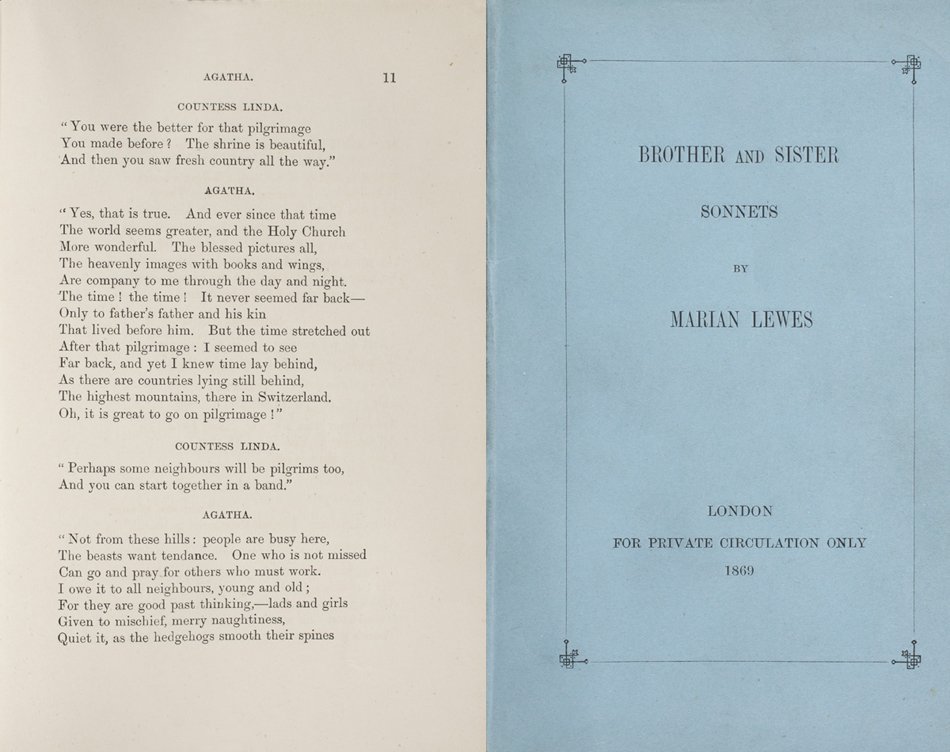
George Eliot (1819-1880)
London: Trübner & Co., 1869
Gifts of Deborah Wachs Barnes, Sharon Wachs Hirsch, Judith Pieprz, and Joel Wachs, AB’92
George Eliot (1819-1880)
London: For Private Circulation Only, 1869
Gifts of Deborah Wachs Barnes, Sharon Wachs Hirsch, Judith Pieprz, and Joel Wachs, AB’92
Two Wise forgeries, Agatha is a fraudulent reprint of a true rarity. George Eliot wrote this poem after a visit to a peasant's cottage at St. Märgen in the summer of 1868, and it was first published in America, in The Atlantic Monthly, in August 1869. To protect the British copyright, a small number of copies were printed in London in pamphlet form. This is one of only a handful of genuine titles forged by Wise, whose normal method was to invent a plausible but non-existent first edition.
The two printings are not textually identical; the forgery may be easily identified by the presence of a comma after the word "behind" on page 11, line 16. In the Ashley catalogue Wise explains the "minute variants" by concocting a story involving Buxton Forman's youthful involvement with seeing the poem into print, "Of the first edition twenty copies only were printed. These, however, proved insufficient to meet the demands of friends who clamoured for them, and a second batch of fifty copies were ordered. But the types had already been distributed, and were set up afresh for the second printing. Mr. Forman claimed that these later copies were a 'second issue of the first edition'; but as the types from which they were printed were re-set, they undoubtedly form a second edition of the poem."
Wachs Nos. 392 and 393
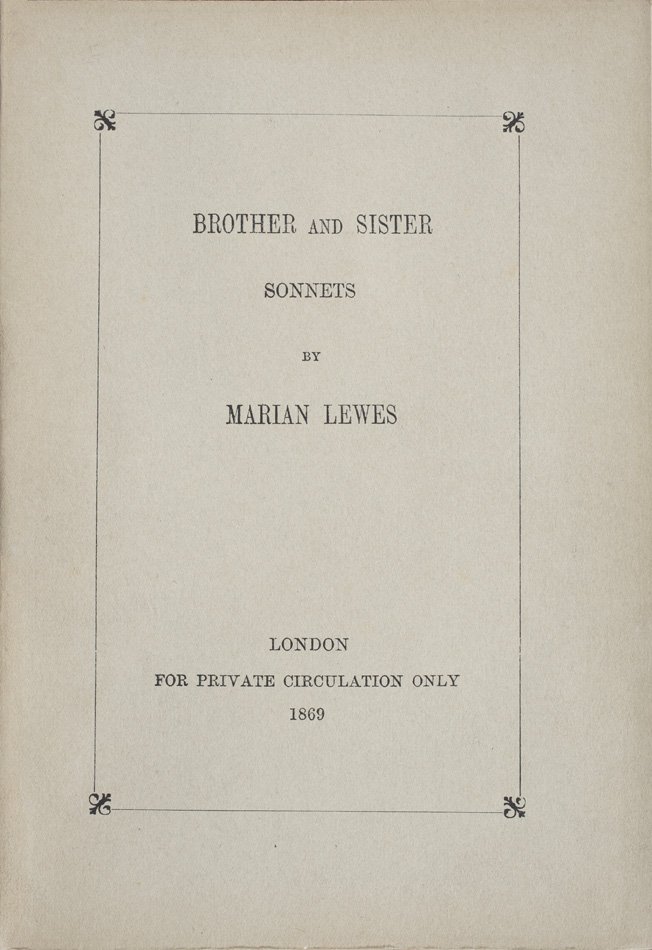
[George Eliot (pseudonym of Mary Ann Evans) (1819-1880)]
London: For Private Circulation Only, 1869
Gift of Deborah Wachs Barnes, Sharon Wachs Hirsch, Judith Pieprz, and Joel Wachs, AB’92
A forgery of a forgery. This counterfeit can be easily distinguished from the Wise printing by the presence of fleur-de-lis at the corners on the front wrapper. Circumstantial evidence, notably the appearance of copies in the book trade, suggests that this reprint was produced in America, possibly without any knowledge that the earlier printing was a fake.
Wachs No. 253
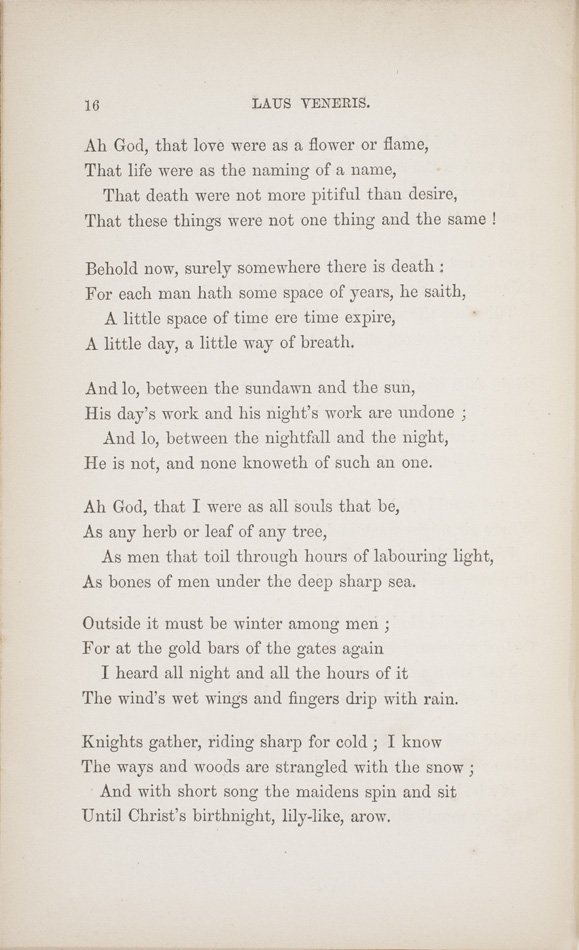
Algernon Charles Swinburne (1837-1909)
London: Edward Moxon & Co., 1866
Gift of Deborah Wachs Barnes, Sharon Wachs Hirsch, Judith Pieprz, and Joel Wachs, AB’92
First issue, with all the necessary leaves uncancelled; quite early in the print run many leaves were cancelled and various errors corrected. The eight pages of ads are also in the first state, with the review notice of Atalanta in Calydon misplaced among the reviews of Chastelard. Of this first issue Wise says, "An absolutely genuine example with every leaf . . . in the original state is of extreme rarity and is very seldom to be met with."
Wachs No. 19
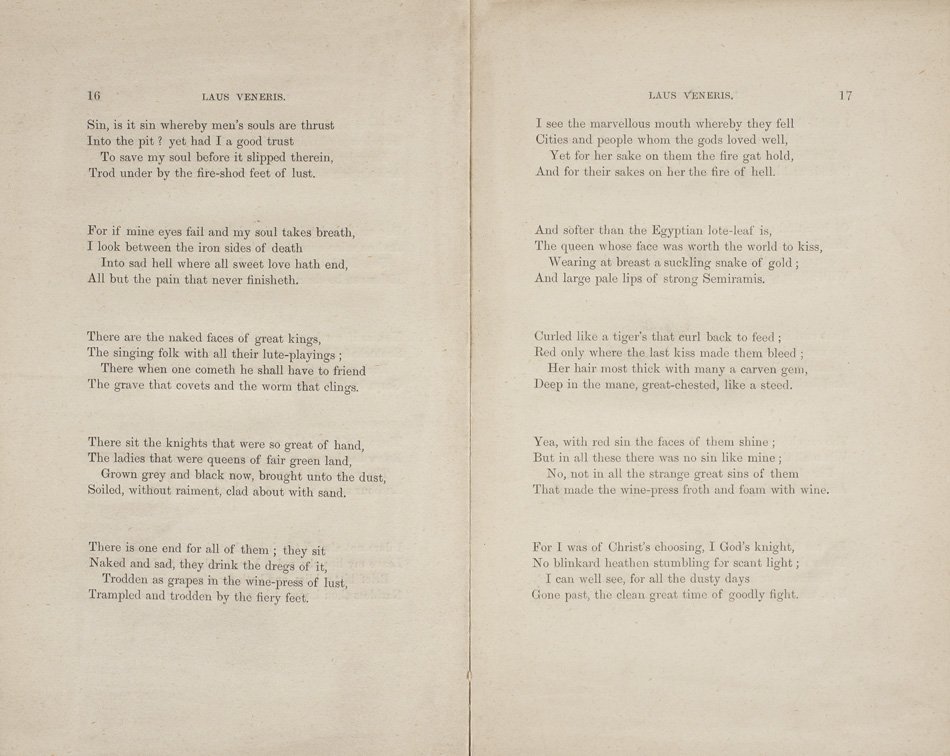
Algernon Charles Swinburne (1837-1909)
London: Edward Moxon, 1866 [ca. 1890]
Gift of Deborah Wachs Barnes, Sharon Wachs Hirsch, Judith Pieprz, and Joel Wachs, AB’92
The poem did in fact appear in 1866, in Moxon's edition of Poems and Ballads. Wise managed to convince Swinburne himself that a small private printing of this one poem had been distributed to friends before the book's publication. In fact the printing was done about 1890, and a small "remainder" came to light, which Wise "traced" to the sale of surplus effects from Moxon's estate.
Wachs No. 136
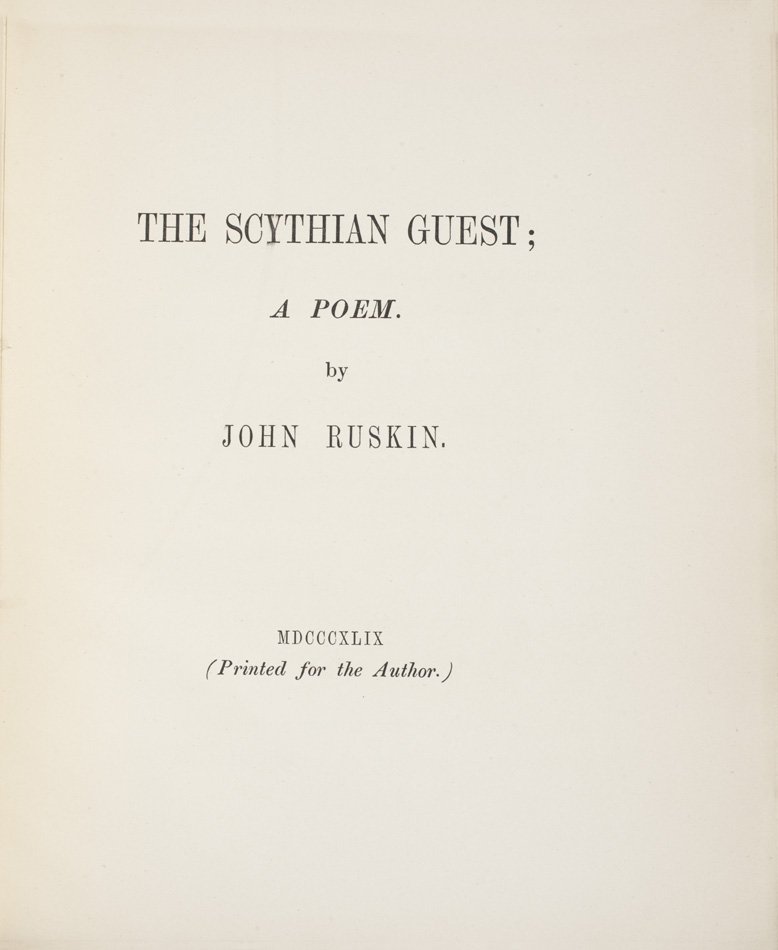
John Ruskin (1819-1900)
[S.l.]: printed for the author, 1849
Gift of Deborah Wachs Barnes, Sharon Wachs Hirsch, Judith Pieprz, and Joel Wachs, AB’92
This poem was written in 1839, and first printed in an annual, Friendship's Offering, the following year. It reappeared in Ruskin's privately-printed Poems in 1850. For this purported first edition Wise adopted his usual strategy of inventing a plausible private printing, though there is in fact no reason why Ruskin would have chosen to print this poem separately while his father, John James Ruskin, was already making preparations for a collected edition of his verse. Wise first included this forgery in an appendix to volume two of his Ruskin bibliography ("Omissions"), published in 1893.
Wachs No. 225
